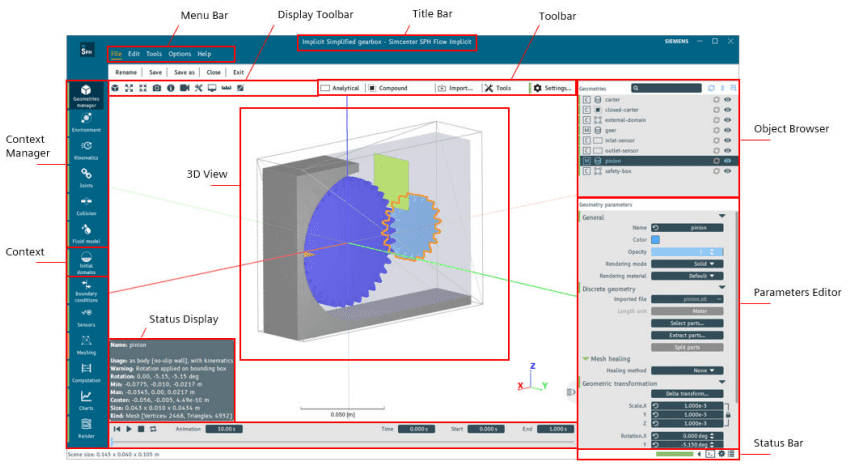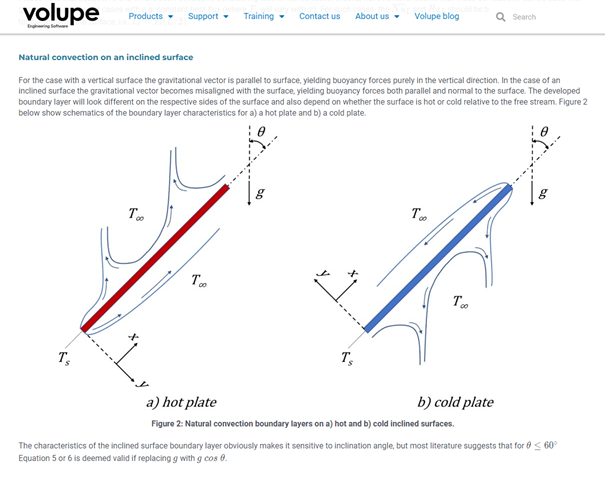The purpose of this blog post is to introduce one of the newer additions to the Simcenter portfolio, Simcenter SPH Flow. This is not any sort of official news, the acquisition of Nextflow Software was announced over a year ago and the press release can be found here [Siemens acquires Nextflow Software to speed simulations with advanced meshless technology | Siemens Software]. The goal of this post from the Volupe side is to highlight the capabilities.
From the name of the software, it can be derived that we are talking about an SPH solver. SPH is short for smoothed-particle hydrodynamics. The following sections will describe what an SPH solver is and what it does, what applications are relevant for this type of solver and what is included in the tool Simcenter SPH Flow. We will also shortly discuss the roadmap for the tool.
What is an SPH solver?
SPH as a method was initially developed for astrophysical problems but has been turned into a tool that is used in many fields of research. It has some advantages compared to classical CFD, the main one being that it is a meshfree method. It is a Lagrangian method where instead of a mesh size to increase and decrease the resolution, the size of the particles fills this function. One disadvantage for the SPH-methodology compared to grid-based methods, is the general difficulty of setting boundary conditions like inlets, outlets, and walls. The method is inherently good at simulating free surfaces and can be compared to the VOF method in Simcenter STAR-CCM+. The method is still based on the Navier-Stokes equations.
Applications for Simcenter SPH Flow
Seeing as the method is good for free surfaces, many of the suggested applications have this type of problem description. A free surface that needs to be resolved, and often also in conjunction with relatively high velocities. One typical application that is often highlighted where SPH is possible and grid-based CFD is not (at least not in any practical application), is high speed gearboxes. Often the high velocities seen are this application makes so that a VOF simulation in Simcenter STAR-CCM+ is either way too time-consuming or the free surface numerically diffuses, and continuity is not fulfilled.
Aside from high-speed gearboxes there are other applications in the automotive industry where Simcenter SPH Flow can speed up simulations, like soiling and wading. Soling is typically water impingement on a car body or windshield. Hydroplaning is another area where an SPH solver can be used. The wading application is vehicle soiling when a vehicle drives through a deep puddle or pool of water. The animation below shows an example of this.
And this next animation shows an example of soiling.
What can be seen from these examples are the use of rotating bodies, translations and free body motion, making Simcenter SPH Flow a versatile tool in simulating motion.
Outside of the automotive industry some applications where Simcenter SPH flow can be useful are simulations of ball bearings and in civil engineering it can be used with great success in dam breakage simulations.
More than that, it is very useful in a couple of multiphysics applications such as capillary simulations, surface tension, rheology. The picture below shows an example of rheology in non-Newtonian fluids.

Included in Simcenter SPH Flow
Simcenter SPH Flow consists of three main components; Simcenter SPH Flow studio, an explicit solver and an implicit solver. You will always need Simcenter SPH Flow studio, and that can be used together with either the implicit solver or the explicit solver.
Simcenter SPH Flow Studio
Simcenter SPH Flow studio provides the GUI of the software and allows you to handle geometries and set up your simulation going through a number of contexts. What you can typically do is to create post-processing and reporting planes or other shapes, like your derived parts from Simcenter STAR-CCM+. This is also from where you load and save your cases. The picture below shows what the GUI can look like with some simple explanations.

Simcenter SPH Flow Implicit and Simcenter SPH Flow Explicit
The software package of Simcenter SPH Flow provides two solvers that are suitable for different applications. The main features and differences between the implicit and explicit solver can be seen in the comparison below.


The heat transfer modeling under flow capabilities refers to mapping flow data using tables to e.g. Simcenter STAR-CCM+ or a FEA tool. The aerodynamic force also under flow capabilities refers to applying a strict force on the background without any 2-way coupling. The variable size of the Explicit solver under Multiresolution can look typically like the animation below.
I hope this has been interesting information for you as a reader of our blog. I also hope that you can see the benefits of using a SPH-solver in some simulation applications. Do not hesitate to reach out if you have any questions, as usual to support@volupe.com. We will do our best to try to answer any questions you might have regarding this product relatively new to the Simcenter portfolio.
Author

Robin Victor
+46731473121
support@volupe.com
